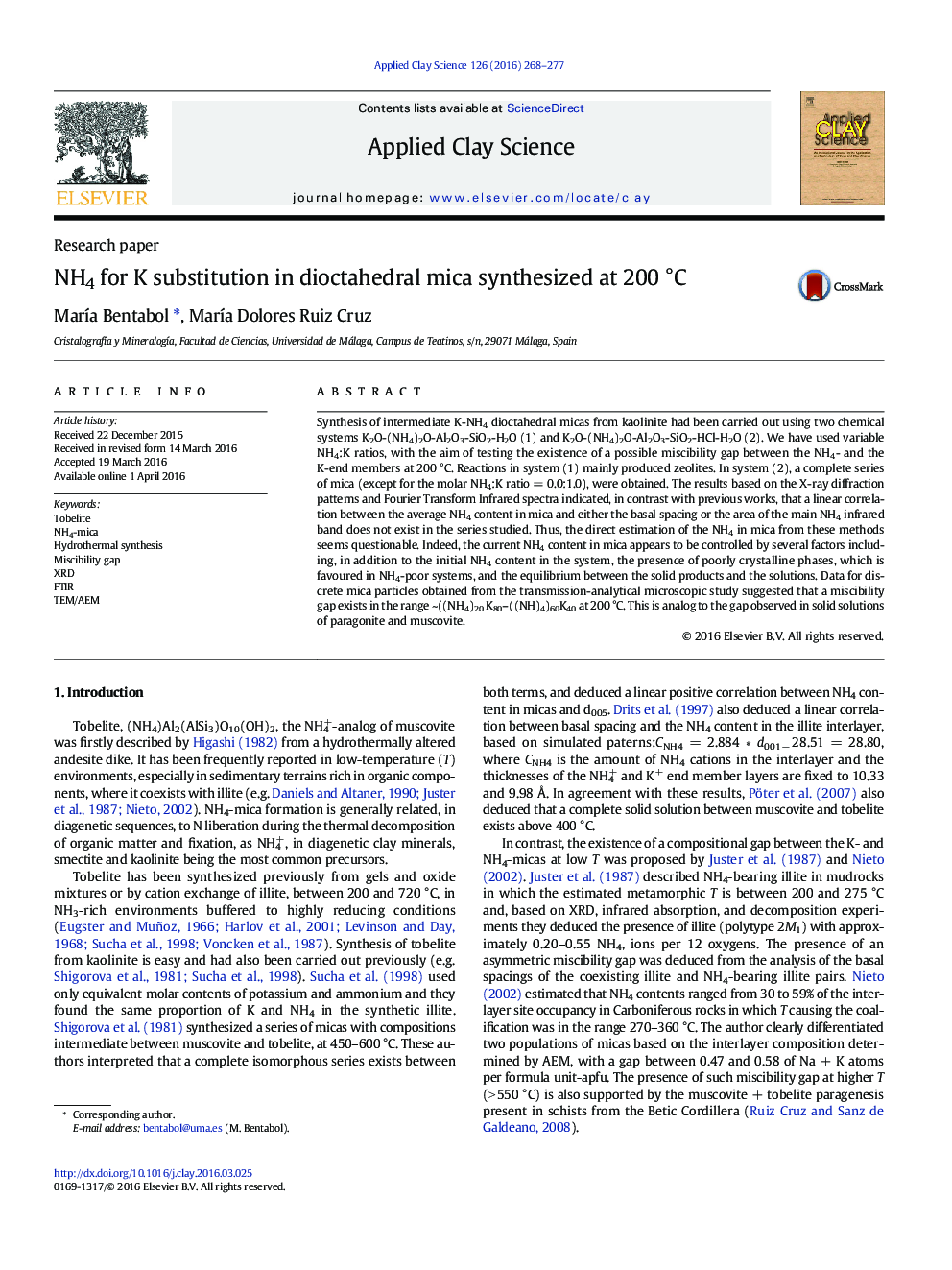| کد مقاله | کد نشریه | سال انتشار | مقاله انگلیسی | نسخه تمام متن |
|---|---|---|---|---|
| 1694066 | 1519059 | 2016 | 10 صفحه PDF | دانلود رایگان |

• A series of mica containing variable NH4:K molar ratio has been synthesized at 200 °C.
• A series of mica has been characterized by XRD, TEM, FTIR and chemical analysis.
• Accurate estimation of composition of: solid products and the amount of mica formed
• Accurate estimation of the average NH4 and K contents in mica in each system studied
• A miscibility gap exists in ~((NH4)20K80–((NH)4)60K40 in micas synthesized (200 °C)
Synthesis of intermediate K-NH4 dioctahedral micas from kaolinite had been carried out using two chemical systems K2O-(NH4)2O-Al2O3-SiO2-H2O (1) and K2O-(NH4)2O-Al2O3-SiO2-HCl-H2O (2). We have used variable NH4:K ratios, with the aim of testing the existence of a possible miscibility gap between the NH4- and the K-end members at 200 °C. Reactions in system (1) mainly produced zeolites. In system (2), a complete series of mica (except for the molar NH4:K ratio = 0.0:1.0), were obtained. The results based on the X-ray diffraction patterns and Fourier Transform Infrared spectra indicated, in contrast with previous works, that a linear correlation between the average NH4 content in mica and either the basal spacing or the area of the main NH4 infrared band does not exist in the series studied. Thus, the direct estimation of the NH4 in mica from these methods seems questionable. Indeed, the current NH4 content in mica appears to be controlled by several factors including, in addition to the initial NH4 content in the system, the presence of poorly crystalline phases, which is favoured in NH4-poor systems, and the equilibrium between the solid products and the solutions. Data for discrete mica particles obtained from the transmission-analytical microscopic study suggested that a miscibility gap exists in the range ~((NH4)20 K80–((NH)4)60K40 at 200 °C. This is analog to the gap observed in solid solutions of paragonite and muscovite.
Journal: Applied Clay Science - Volume 126, June 2016, Pages 268–277